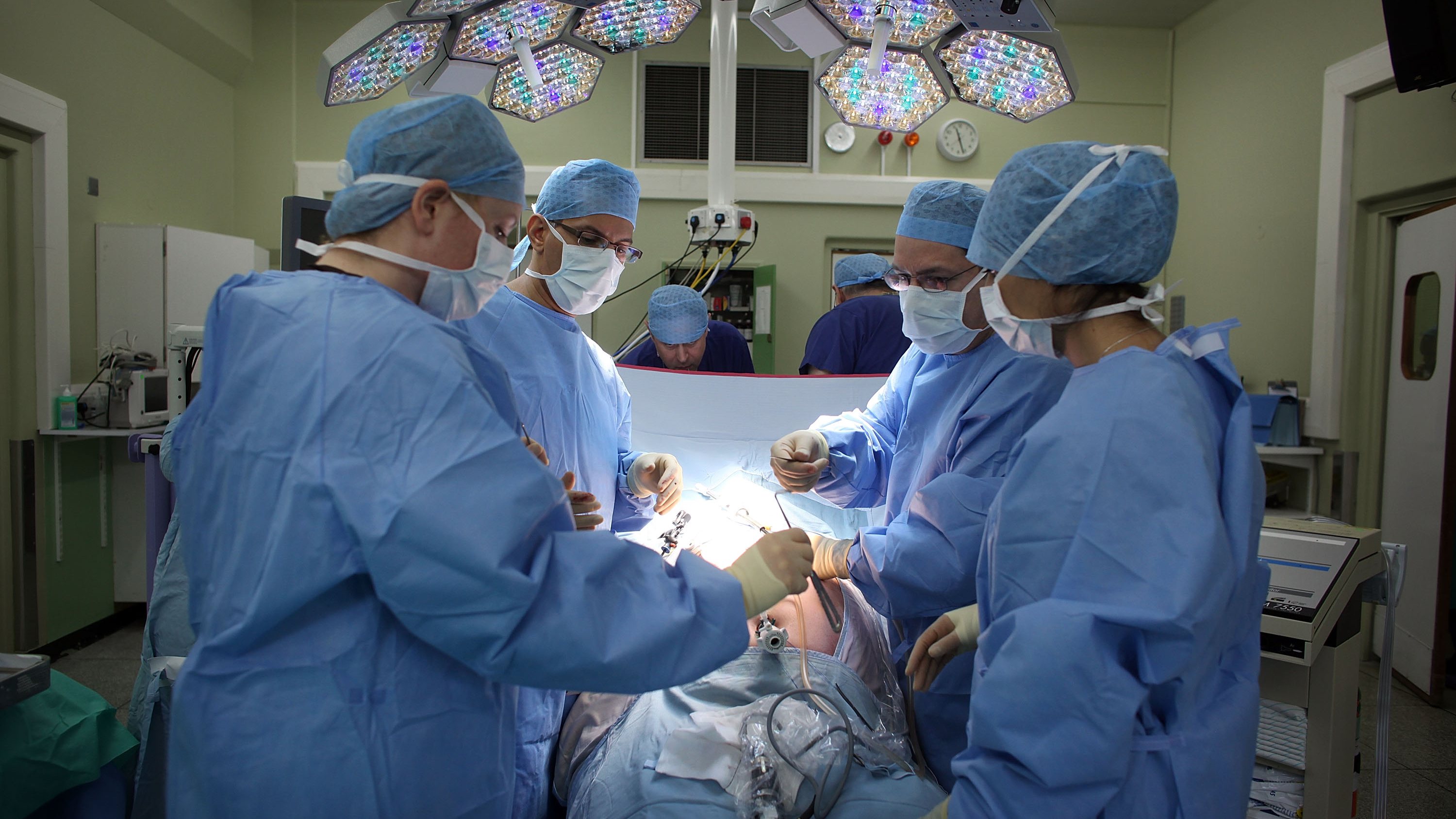They manage to blink, cry, moan and even sweat: the state-of-the-art “dolls” at the Centro de Simulação Clínica do Algarve simulate clinical cases, from childbirth to surgery, allowing doctors to try and fail outside of real life.
Upon entering the center, on the top floor of the Faculty of Medicine and Biomedical Sciences of the University of Algarve (UAlg), on the Ganeblas campus, in Faro, the sensation is that of being in a small hospital, where throughout of a corridor there are emergencies, intensive care, obstetrics, imaging and operating room, among others.
However, lying on the beds are simulators that resemble humans: in one room, a mother has just given birth, with the newborn and the placenta still on her body, while at her side a premature baby born with a weight of 800 grams “grows” in an incubator. In intensive care, the vital signs of a patient are monitored, whose breathing is visible.
A doctor for 25 years and an intensive care provider for 10 years, Alexandre Baptista, director of the center, remembers the time when he was studying at the university and there were only books and “books” to read and study, a reality very different from the current one. , in which Medical students and postgraduates can train on highly sophisticated simulators.
“Today, technology has evolved to the point that we have equipment that simulates each and every one of the expressions and activities: a scream, a scream, a choking sensation. Today, medical students or already licensed doctors have access to technology that drastically benefits their learning needs, ”he sums up.
The UalgTec Health Simulation Center also has a room where it is possible to train laparoscopic surgeries, a more modern and less invasive surgical technique, as well as ultrasound, and there is also a room with a screen that presents a three-dimensional image. digitized. human body in which it is possible to make “cuts” and see the interior.
In some of the simulators, which can be low, medium or high fidelity, there is also the possibility of using virtual reality glasses to simultaneously see what is happening inside and outside these “puppets” that help train different clinical practices. helping to accelerate the training and practice of doctors.
“They are patients who complain, who scream, who moan, who cry, who sweat. The patient can, for example, urinate, if we are simulating a stroke or an epileptic attack. In fact, nowadays, the advancement of these simulators has allowed us to simulate practically everything we want”, says Alexandre Baptista.
According to the clinician, one of the great assets of the center is that it allows you to try, repeat procedures over and over again and make mistakes, a learning process that is “extremely important in clinical practice”, because the least thing all doctors want to do with the patient, on a day-to-day basis, is to be wrong, note.
“Virtually all doctors should be forced to go through simulation centersbecause, in fact, here we are able not only to flatten the learning curves, making us more efficient and competent in clinical practice, but also, mainly, because we are able to repeat and there is no better place to go wrong than here“, he emphasizes.
In some of the rooms there are fake mirrors, and it is from the other side of the mirror that the trainers give orders to the trainees, changing the patient’s vital signs and worsening or alleviating their state of health, so that they too can train their skill. to react to unexpected situations.
“We have pre-defined clinical cases, and once the intern gets here, they start to address the clinical case that we designed. On that side there is always someone who is capable of making the patient a little more serious or a little better. [E de ver] whether the action taken is wrong or right. And, in the end, until making the doll say ‘thank you’”, she emphasizes.
These commands are possible through a software “quite advanced” which is programmable, which makes it possible to recreate a series of clinical situations, some of which are even real cases, whether in emergency situations, during childbirth or in the context of intensive care, regardless of the type of pathology.
“What we tried was to be able to simulate almost everything, from the entrance of the patient to the hospital until his departure”, exemplifies Alexandre Baptista, highlighting that the center is very well equipped, with technology for people who seek training “practically in all areas”.
The UalgTec Health Simulation Center, officially inaugurated at the beginning of March, involved an investment of two million euros, an amount co-financed by the European Regional Development Fund (FEDER) of the European Union, through the Algarve Regional Operational Program 2014-2020 (CRESC ALGARVE 2020).
Source: Observadora
